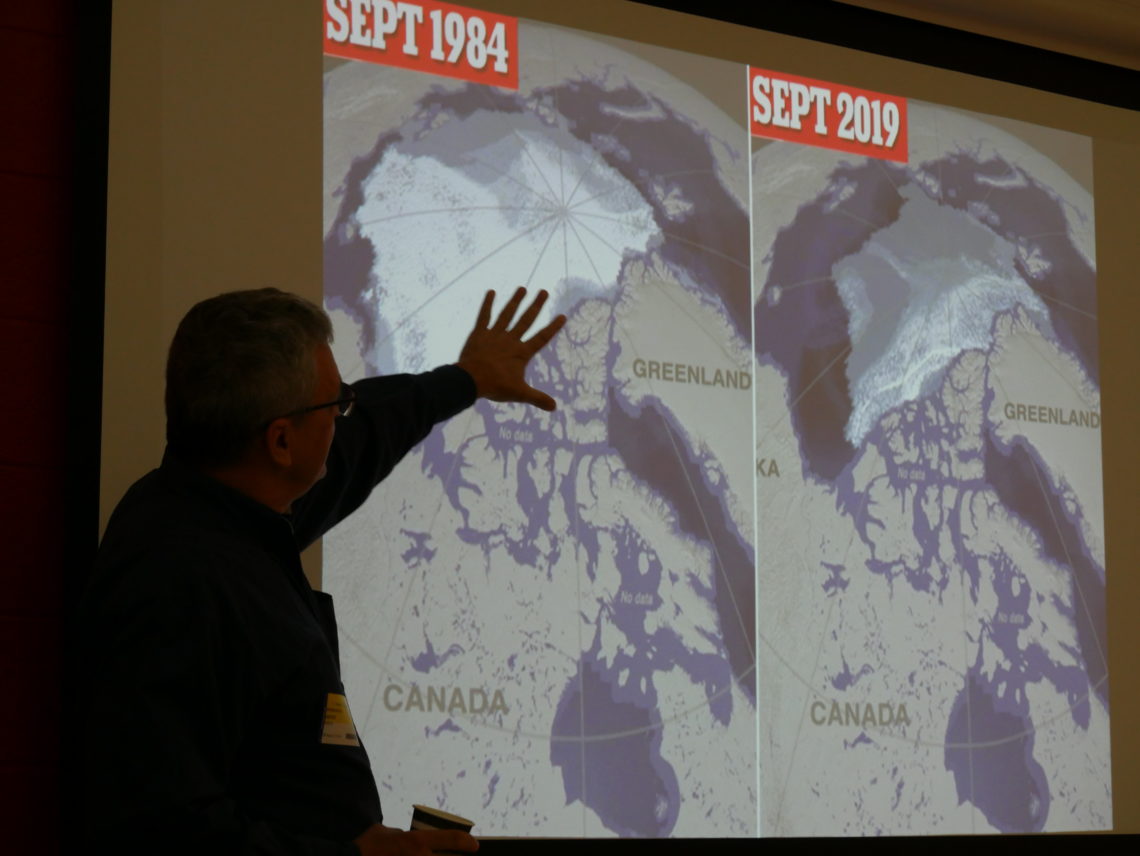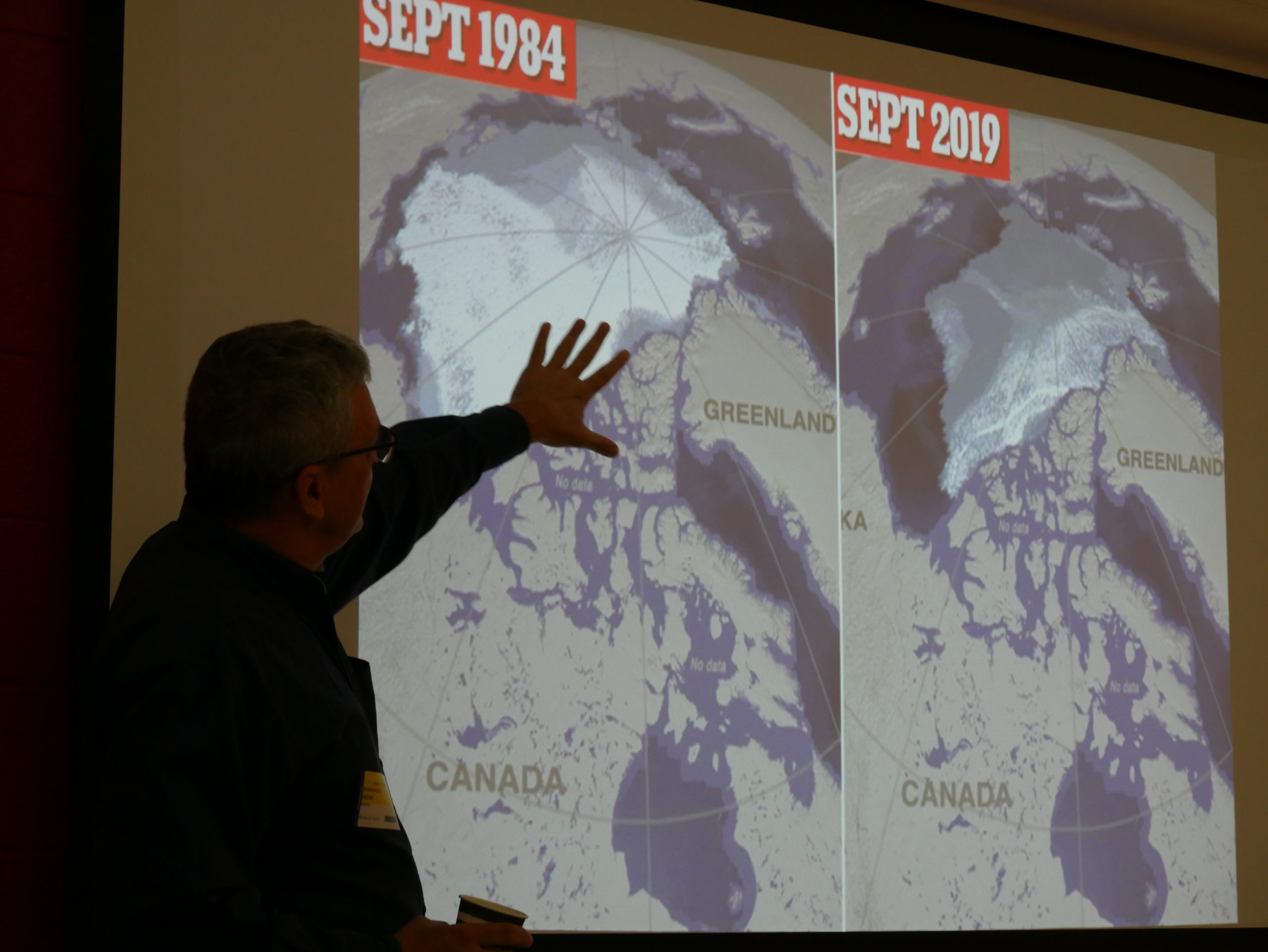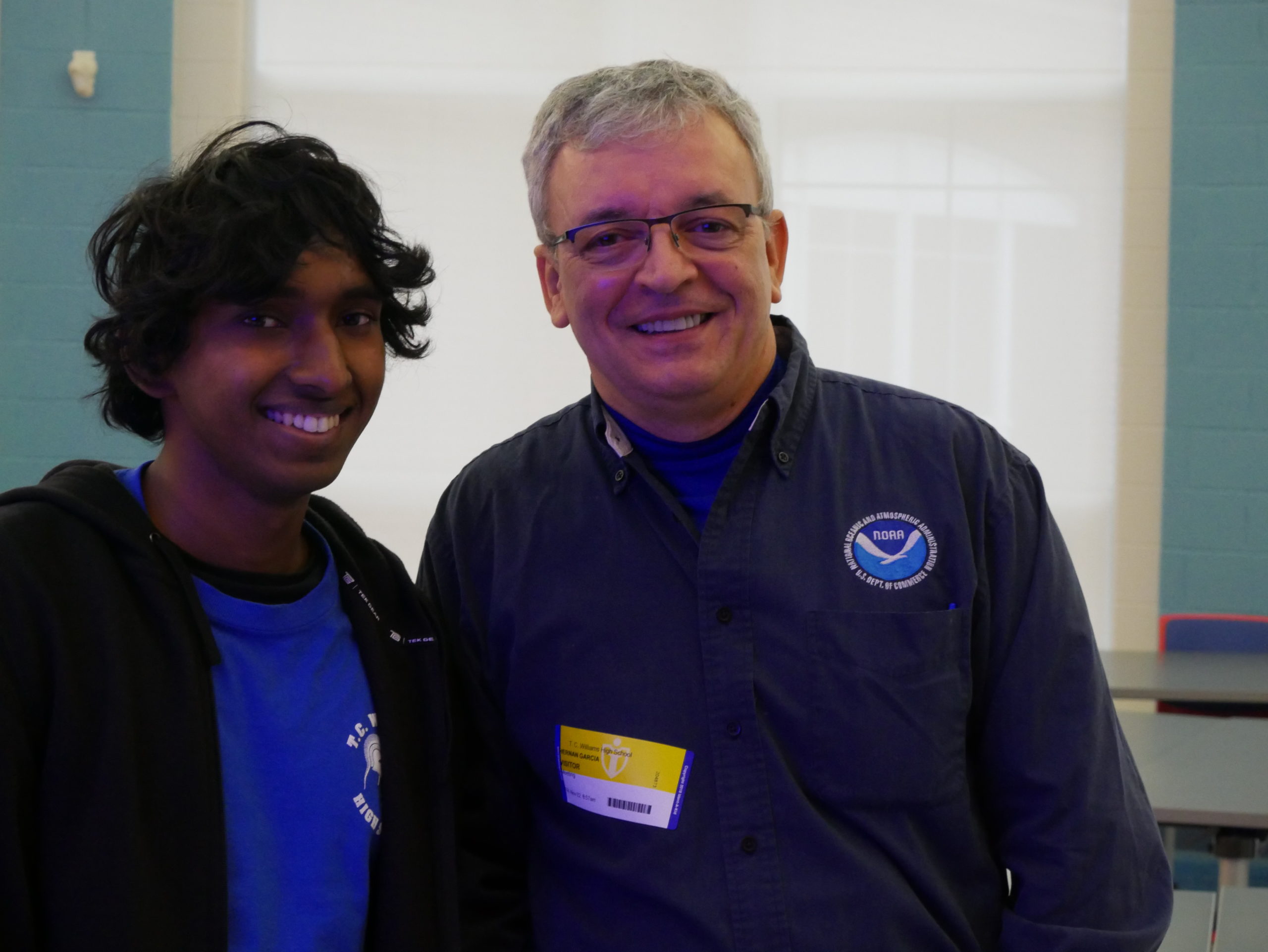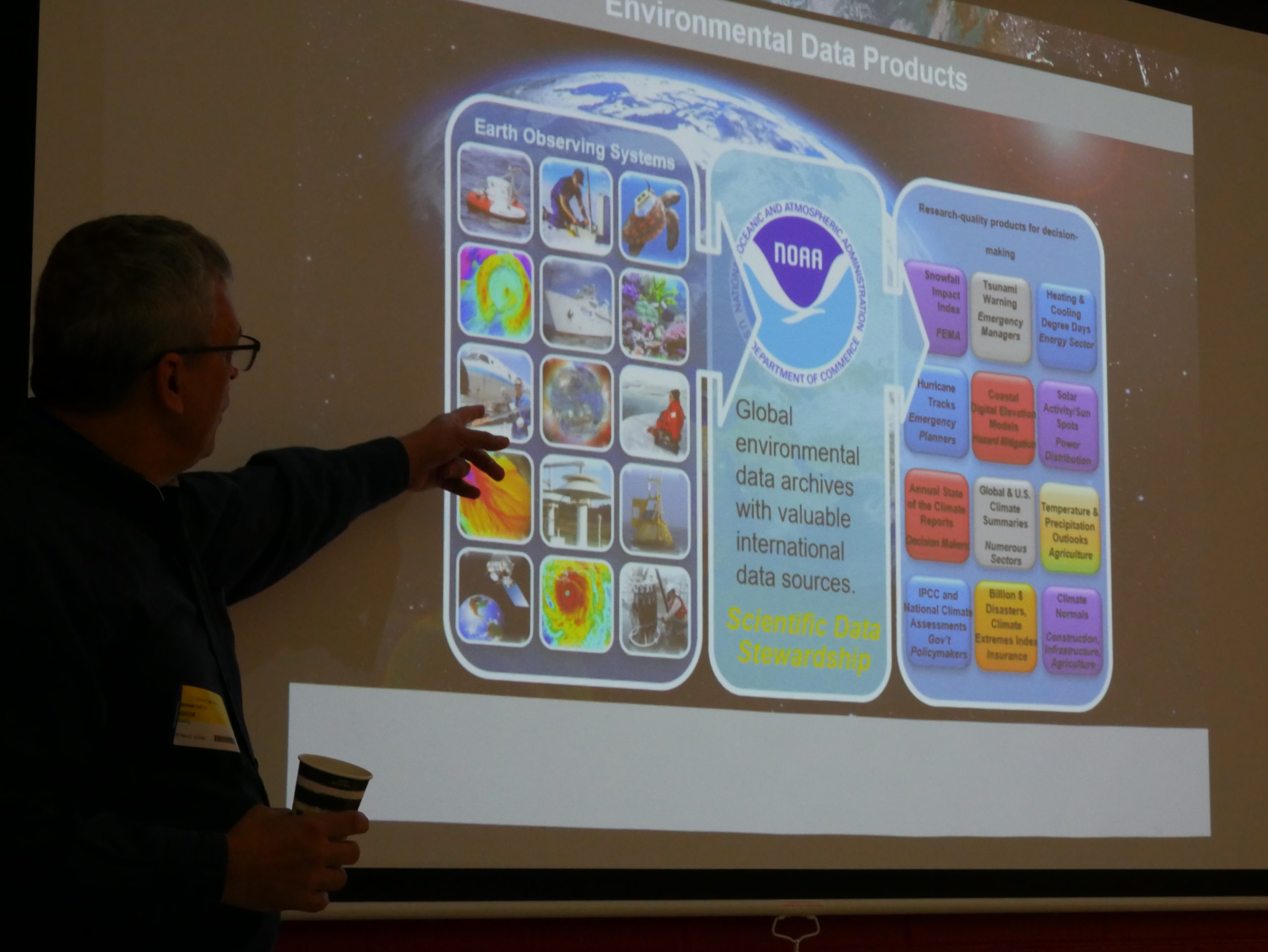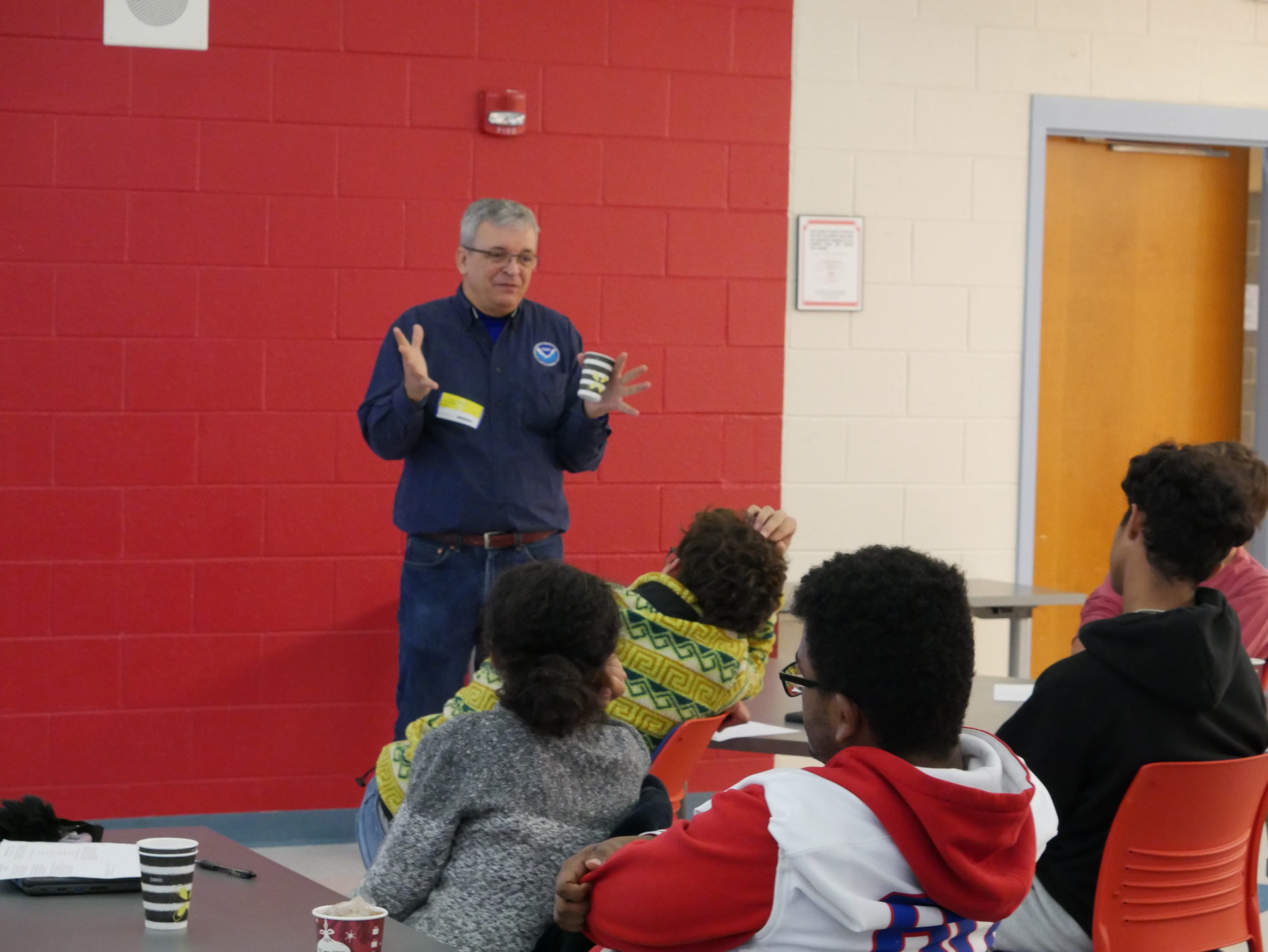Doctor Garcia Educates Students on NOAA and Climate Change
Regina Allen and Abigail St. Jean
“We can not keep damaging the only planet we have, this is it. There is no planet B,” said Doctor Hernan Garcia. On November 22nd, Garcia visited TC and gave a presentation to a group of AP Environmental Science and Oceanography students.
During his presentation, Garcia discussed the jobs of NOAA, his work there, and the consequences and possible solutions to global warming.
Garcia was born in Venezuela and is currently the lead scientist in charge of the Chemical Oceanography section of the World Ocean Database (WOD) and a chemical oceanographer at the National Oceanographic and Atmospheric Administration (NOAA) National Center of Environmental Information (NCEI).
NOAA is a very large scientific agency that collects data using a variety of satellites, buoys, and boats. A lot of this data is collected with three geostationary satellites and low orbiting satellites at the poles. There are a variety of jobs at NOAA, from oceanographers to IT specialists, who are working around the clock to ensure that they have access to the most recent weather/climate developments.
Garcia’s job is to interpret and display this data in a way that makes making decisions easier for everyone, including the government and the general public. He said he “builds large data for people in the government to use and base decisions off of.” These decisions can range from choosing where to put buildings or farms to selecting what someone might wear that day.
“I have been all over the world and it’s a very fascinating job,” said Garcia. He is especially interested in the level of oxygen in the ocean and how it fluctuates.
Because of his education and his work at NOAA, Garcia put a large emphasis on the problems of global warming during his presentation. He said that global warming has caused over $208 billion in weather disasters since 1980 and the combination of hurricanes, wildfires, droughts, and other natural disasters have caused approximately $1.1 trillion in damages and 9660 deaths.
Garcia also hosted an engaged discussion about finding a solution to global warming, which they concluded must include finding a “balance between economy and maintaining a lifestyle that we’re accustomed to, while keeping the Earth at a level that we can live.” He encouraged students to take a realistic look at the earth’s future even outlining the projected flooding due to the warming of the world’s oceans.
He ended the talk by giving insight on his path to becoming an oceanographer,“I remember being in high school and saying I am going to be a Phd in physical oceanography. I didn’t get the physical part.” Garcia explained the switch to the chemical oceanography field and outlined his education path. It started with receiving his Bachelor’s degree at Humboldt State University and continued with when he earned a Master’s degree and a PhD in Oceanography from Oregon State University.
Garcia continues to better the world through his research at NOAA and educating others with the data he collects. He inspired TC students to think critically about solutions to climate problems plaguing our society and they were very grateful to listen to the speaker.

